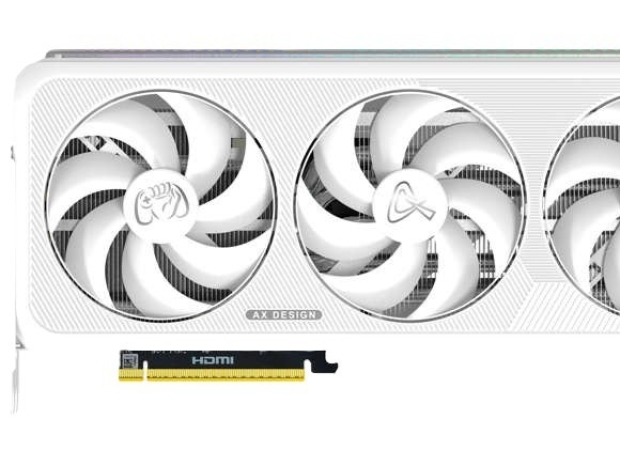The RTX 5080, 5070 Ti, and 5070 variants in this line all share the same core layout and cooling solution. Each features a triple-slot, triple-fan cooler with a white shroud and minor factory overclocks. Boost clocks edge up by around two to three per cent over Nvidia’s reference specs, which doesn’t justify much in terms of performance difference or marketing excitement.
The key marketing point is the use of a recessed 16-pin (12VHPWR) power connector that sits below a magnetic shroud. The design keeps the cable out of view, running it alongside the heatsink, though AX Gaming has not shown what kind of connector is on the other end. It could be another 16-pin or a multi-headed PCIe adapter, but right now that's speculation.
AX Gaming’s power supply recommendations are also inflated compared to Nvidia’s guidance. The 5080 X3W Max with a TDP of 360W is listed with an 850W PSU minimum, while the 5070 Ti and 5070 are recommended at 800W and 750W respectively, despite TDPs of 300W and 250W. These figures are higher than necessary for the modest factory overclocks and could easily be padded for margin.
The omission of the RTX 5090D is likely a result of export restrictions, as the high-end GPU is currently banned in China. AX Gaming hasn’t commented, but the absence is notable given its flagship status in the Blackwell line.
There’s no pricing or release date yet, and AX Gaming’s reach remains mostly limited to China. While the cards do occasionally appear via Newegg or Amazon, the brand’s presence in Europe and North America is still marginal.
These X3W Max cards follow the usual partner playbook. They have the same specs, new shroud, minor tweaks.
AX Gaming GeForce RTX 50-series X3W Max Graphics Cards
|
Graphics Card |
Boost Clock (GHz) |
Power Consumption (W) |
Minimum Power Supply Capacity (W) |
|---|---|---|---|
|
GeForce RTX 5080 X3W Max 16GB |
2,670 |
360 |
850 |
|
GeForce RTX 5070 Ti X3W Max 16GB |
2,512 |
300 |
800 |
|
GeForce RTX 5070 X3W Max 12GB |
2,572 |
250 |
750 |




